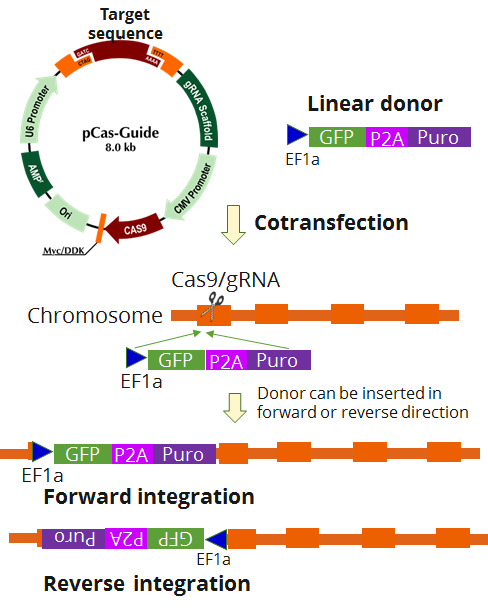Ap1m1 Mouse Gene Knockout Kit (CRISPR)
CAT#: KN501354
Ap1m1 - KN2.0, Mouse gene knockout kit via CRISPR, non-homology mediated.
KN2.0 knockout kit validation
KN501354 is the updated version of KN301354.
USD 1,290.00
2 Weeks*
Size
Other products for "Ap1m1"
Specifications
| Product Data | |
| Format | 2 gRNA vectors, 1 linear donor |
| Donor DNA | EF1a-GFP-P2A-Puro |
| Symbol | Ap1m1 |
| Locus ID | 11767 |
| Disclaimer | The kit is designed based on the best knowledge of CRISPR technology. The system has been functionally validated for knocking-in the cassette downstream the native promoter. The efficiency of the knock-out varies due to the nature of the biology and the complexity of the experimental process. |
| Reference Data | |
| RefSeq | NM_007456 |
| Synonyms | AA408894; Adtm1A; AP47; Cltnm; mu1A |
| Summary | This gene encodes the mu-1 subunit of the scaffolding adapter protein complex AP-1 and is a member of the mu adaptin family. The AP-1 complex, which consists of 4 subunits (mu-adaptin, beta-prime adaptin, gamma-adaptin, and the small chain adaptin), is one of the predominant coat proteins of membrane vesicles involved in eukaryotic post-Golgi trafficking. The AP-1 complex is located at the Golgi vesicle and links clathrin to receptors in coated vesicles. These vesicles are involved in endocytosis and Golgi processing. AP-1 complex subunit mu-1 and other mu-adaptins select cargo proteins bearing sequence-specific sorting motifs. [provided by RefSeq, Jul 2016] |
Documents
| Product Manuals |
| FAQs |
| SDS |
Resources
Other Versions
| SKU | Description | Size | Price |
|---|---|---|---|
| GA200206 | Ap1m1 CRISPRa kit - CRISPR gene activation of mouse adaptor-related protein complex AP-1, mu subunit 1 |
USD 1,290.00 |
{0} Product Review(s)
0 Product Review(s)
Submit review
Be the first one to submit a review
Product Citations
*Delivery time may vary from web posted schedule. Occasional delays may occur due to unforeseen
complexities in the preparation of your product. International customers may expect an additional 1-2 weeks
in shipping.






























































































































































































































































 Germany
Germany
 Japan
Japan
 United Kingdom
United Kingdom
 China
China
